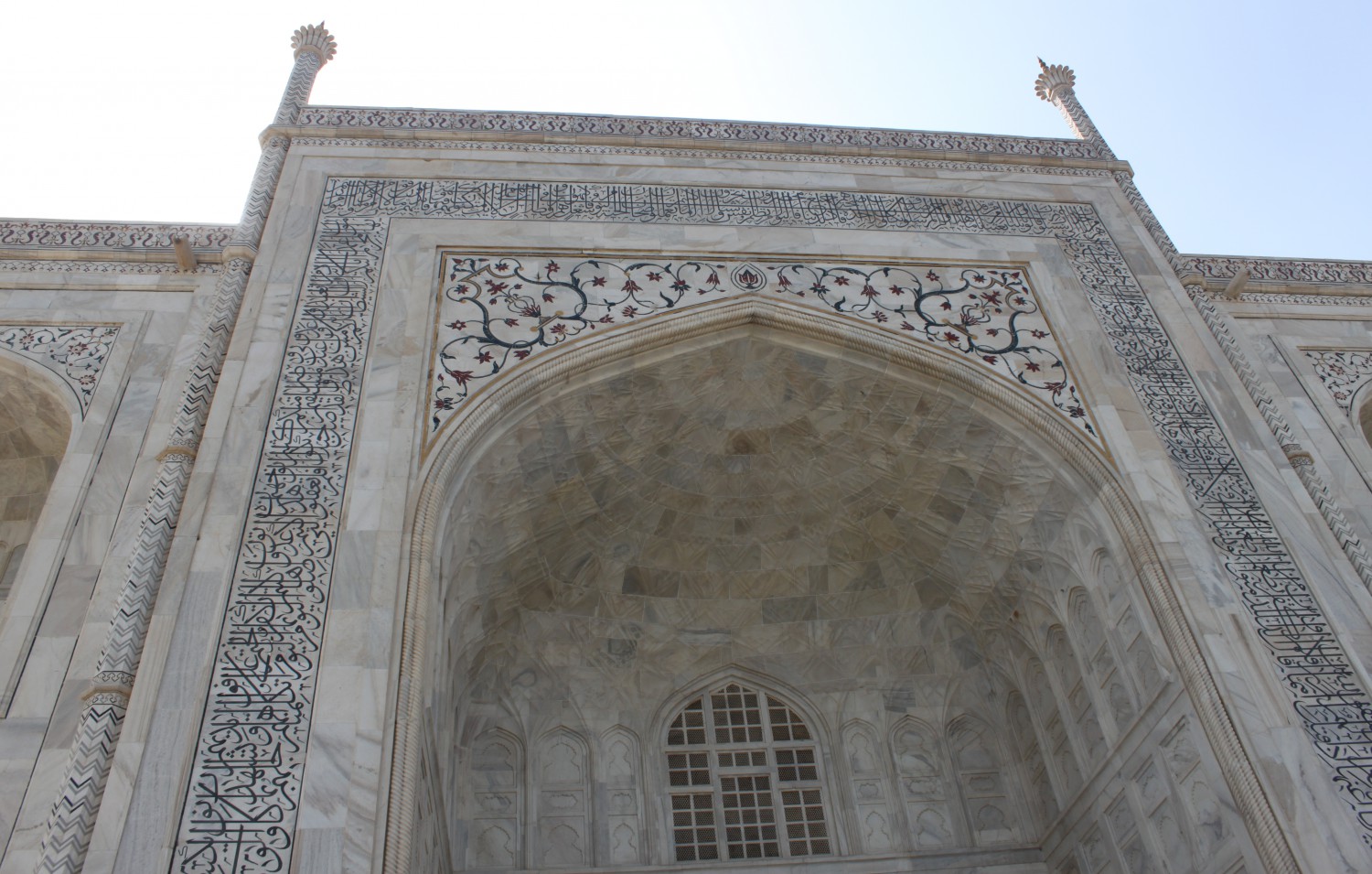Ta Ha
“It was not to distress you [Prophet] that We sent down the Qur’an to you, but as a reminder for those who hold God in awe, a revelation for the One who created the earth and the high heaven, the Lord of Mercy, established on the throne.” (20:2-5)
One of the most recognizable aspects of Islamic architecture is the use of Calligraphy in the decor of structures and buildings. In The Splendor of Islamic Calligraphy authors Abdelkebir Khatibi and Mohammed Sijelmassi note,
“The Malleable quality of the letters of Arabic alphabet, the rhythmic movement of the way in which letters are joined and the harmonious nature of their forms combine to confer a sense of strength and elegance upon the buildings.”
The earliest known Qur’anic inscription in architecture is in the Al-Aqsa Mosque (691 CE) in Jerusalem. Verses of the Qur’an are also inscribed in the Mosque of the Prophet at Medina which was completed in 709 CE. As Islam spread around the world, so did the use of calligraphy, specifically that of the Qur’an in architecture. Over time, various styles were developed among different cultures from Southeast Asia to Western Europe. The revelation in architecture has long outlasted the vast majority of empires and dynasties that built these objects and buildings. Serving as a window to the past, they allow the reader to see the ways in which Muslims wrote, prayed and practiced their religion during various time periods.
This website gives a compilation of sites around the world that exhibit the revelation in their architecture. One thing to note when viewing the Qur’anic verses throughout different forms of architecture is the context. In almost every structure, the verses picked or shown are seen through a political, religious, geographic, social or historical context. Many verses are intermixed with political or historical messages from the individuals who built the structures. For example, many of the Qur’anic verses displayed in the Dome of the Rock are intentionally aimed at a Christian audience. The location of the Dome of the Rock in Jerusalem, a city home to thousands of Christians is a great place to show Qur’anic verses that argue that Jesus is not the son of God.
Click on the “Menu” button to view the various sites.
